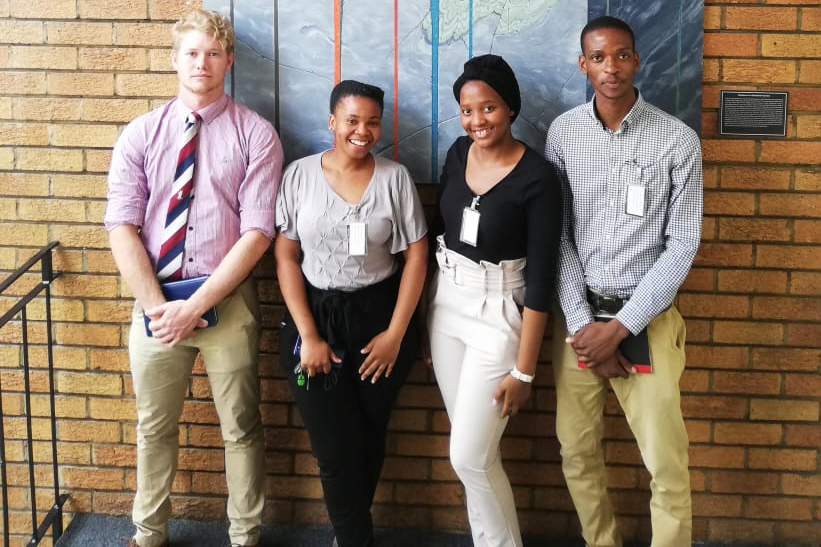16 July 2020
|
Story Leonie Bolleurs
|
Photo Supplied
 From the left are Cobus van Rensburg, Kgomotso Nakedi, Mbalenhle Motha, and Jack Ramaila. The photo of the group of Geology students (2019), standing under an illustration of an eruption of a kimberlite volcano (drawn by Maggie Newman), was taken at the Indicator Mineral Laboratory in Johannesburg.
From the left are Cobus van Rensburg, Kgomotso Nakedi, Mbalenhle Motha, and Jack Ramaila. The photo of the group of Geology students (2019), standing under an illustration of an eruption of a kimberlite volcano (drawn by Maggie Newman), was taken at the Indicator Mineral Laboratory in Johannesburg.
Diamonds are formed very deep within the earth – at least 170 km below ground – surfacing within rock fragments when a unique type of volcano erupts to the surface. The volcanoes are called kimberlite, named after their discovery in Kimberley (about 170 km from Bloemfontein).
According to
Dr Matthew Huber,
Senior Lecturer in the
Department of Geology at the University of the Free State (UFS), geologists who explore diamonds spend most of their time looking for minerals formed in the same conditions as diamonds, because they are much easier to identify than the diamonds themselves.
Receiving licence for diamond samples
The minerals are called ‘diamond-indicator minerals’. Dr Huber has a contract with
De Beers since 2018, according to which they have agreed to analyse these diamond-indicator minerals for Geology students undertaking honours research projects. “I have been providing the samples for the students, and the De Beers analytical facility in Johannesburg has been using their equipment to generate data on the samples,” he says.
In addition, De Beers provided short training courses. Honours students were given the opportunity to visit the laboratory, where they experienced the setup and had the chance to present their research to the technicians and analysts.
“This year, however, the De Beers Group provided the samples for our students to work on from sites that are of interest to them.”
Exposure to the best facilities
“Seven honours students have completed projects with the support of De Beers since 2018. This year, an additional three honours students are busy working on similar projects,” explains Dr Huber.
“It has been amazing to work with De Beers, because their analytical facilities are absolutely the best that I have ever seen. The level of detail and complexity of the projects makes them ideal for training students – in terms of research as well as professionally. My former students have gone on to further postgraduate studies and to work for companies such as Anglo American,” states Dr Huber.